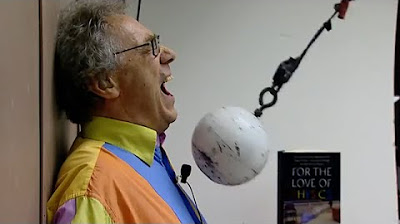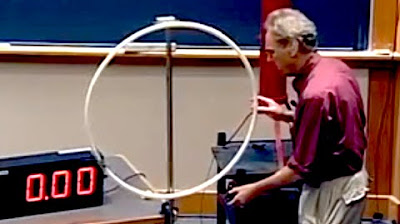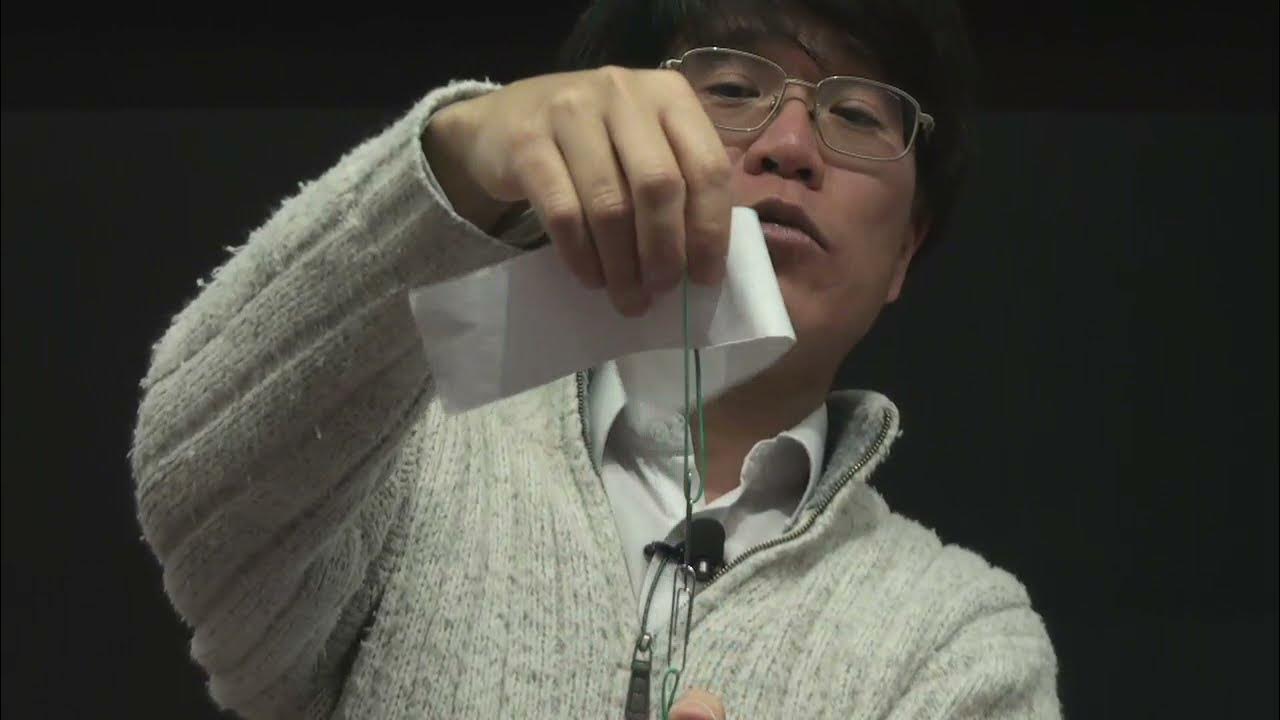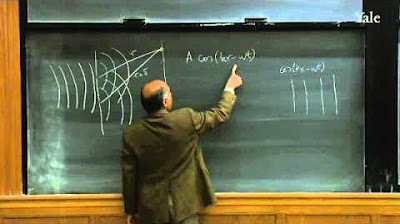How to Make Teaching Come Alive - Walter Lewin - June 24, 1997
TLDRIn this enlightening lecture, Professor Walter Leen from MIT unveils the 'hidden beauty' of physics through everyday phenomena like rainbows and sunsets. He explains the science behind rainbow formation, color perception, and the polarization of light, using demonstrations and interactive experiments. The lecture delves into the principles of refraction, reflection, and scattering, revealing the deeper understanding that physics provides for the natural world's wonders.
Takeaways
- 🌈 Professor Walter Leen emphasizes the 'hidden beauty' of understanding physics, highlighting the deeper appreciation that knowledge can bring to natural phenomena like rainbows and sunsets.
- 📚 The lecture by Professor Leen is aimed at teachers, stressing the importance of conveying the beauty of physics to students and making teaching engaging.
- 🌈 The physics of rainbows is explained through the concepts of refraction, reflection, and the dispersion of light, showing the sequence of colors and the polarization of light within a rainbow.
- 💡 The demonstration of additive color mixing using red, green, and blue lights illustrates how various colors can be created, including white light, through the combination of primary colors.
- 👀 The phenomenon of seeing colors from black and white images, known as the Edwin H. Land effect, is discussed, demonstrating the brain's role in color perception beyond just wavelength.
- 🎨 The concept of color is explored beyond the physics of light, touching on the psychological and perceptual aspects that contribute to our understanding of what we see.
- 🌞 The script delves into the physics behind sunsets, explaining why they appear red due to the scattering of shorter wavelengths like blue and green, leaving the longer red wavelengths.
- 🌬️ Rayleigh scattering is introduced as the reason for the blue color of the sky, where smaller particles in the atmosphere scatter shorter (blue) wavelengths of light more effectively than longer (red) wavelengths.
- 🚬 A demonstration using cigarette smoke is conducted to show the effect of particle size on the color of scattered light, transitioning from blue to white as particles grow.
- 🌅 The lecture concludes with a demonstration of creating a 'sunset' by removing the blue and green components from a light source, leaving only the red light, simulating the colors seen at sunset.
Q & A
Who is the main speaker in the transcript and what is his association with MIT?
-The main speaker is Professor Walter Leen, who is associated with MIT as a physics professor and is considered one of MIT's lecturing treasures.
What is the title of Professor Walter Leen's presentation?
-The title of Professor Walter Leen's presentation is 'How to Make Teaching Come Alive'.
What is the 'hidden beauty' that Professor Leen refers to in the context of physics?
-The 'hidden beauty' Professor Leen refers to is the beauty of understanding and knowledge in physics, which goes beyond the visible beauty of phenomena like rainbows and sunsets.
Outlines
👨🏫 Professor Walter Leen's Introduction to Physics Teaching
Professor Walter Leen is introduced as a renowned lecturer at MIT, particularly for his engaging teaching style in physics. The speaker emphasizes the beauty of understanding physics beyond its surface-level appeal, like the aesthetics of a rainbow or sunset. The presentation aims to explore the 'hidden beauty' of physics, which is the profound knowledge behind everyday phenomena. The lecture's goal is to inspire teachers to convey this beauty to their students, enhancing their appreciation for both art and science.
🌈 The Science of Colors and Additive Mixing
The script delves into the physics of colors, explaining how sunlight is decomposed into its constituent colors using a prism, illustrating the concept of additive color mixing with red, green, and blue light. It discusses how different colors are created by mixing these primary colors in various proportions, a principle utilized in color TVs and computer monitors. The lecture also touches on the philosophical aspects of color perception and the complexities of color experiences.
📚 Edwin Land's Color Demonstration with Black and White
A famous demonstration by Edwin Land is described, where black and white slides, one filtered through a red lens, are projected to create an unexpected color experience. Despite the slides being devoid of color, when projected with a red filter, they produce a palette of colors, challenging conventional understanding of color perception. This phenomenon, not typically covered in physics textbooks, is attributed to the brain's unique response to visual stimuli.
🔄 The Phenomenon of Color Perception with Benham's Top
The lecture introduces Benham's top, a 19th-century demonstration showing that colors can be perceived through black and white stimuli when in motion. When the top is spun, viewers perceive colors that are not physically present, suggesting a neurophysiological explanation for color perception beyond the physics of light and wavelength.
🌈 Exploring Rainbows and the Physics of Light
The script presents a detailed exploration of rainbows, discussing the necessary conditions for their formation and the physics behind their appearance. It covers the concepts of refraction, reflection, and the dispersion of light within water droplets. The lecture aims to answer specific questions about rainbows, such as their radius, color sequence, and polarization, using principles like Snell's law.
💧 Understanding Light Refraction and Rainbow Formation
This paragraph provides a deeper quantitative analysis of light refraction within a water droplet, using mathematical expressions to describe the angles involved in the formation of a rainbow. It explains how light enters a droplet, is reflected and refracted, and exits at specific angles that contribute to the maximum angle for light dispersion, which is crucial for the visibility of a rainbow.
🌈 The Geometry of Rainbows and Color Cones
The script describes the geometry of a rainbow, explaining how each raindrop acts as a prism, reflecting light back in a cone-shaped pattern. It details how the colors of the rainbow are distributed within these cones, with red on the outside and other colors, including white light, within the cone. The explanation includes the use of a special triangle to visualize the angles at which different colors are maximized.
🌞 The Position of the Sun and the Visibility of Rainbows
This paragraph discusses the relationship between the position of the sun and the visibility of rainbows. It explains how the sun's position in the sky affects the angle at which light is refracted and reflected by raindrops, and how this in turn influences the colors and brightness of the rainbow. The explanation includes the concept of the rainbow's axial symmetry and how it appears to an observer.
📚 Historical and Artistic Representations of Rainbows
The script presents a historical and artistic perspective on rainbows, including a painting from 8th century Turkey and a humorous advertisement for a 'rainbow maker.' It also discusses a personal account of creating a rainbow in the backyard, highlighting the scientific principles involved in the process.
🌈 Advanced Rainbow Phenomena: Secondary Bows and Supernumerary Bands
The lecture delves into more complex rainbow phenomena, such as secondary bows and supernumerary bands. It explains the formation of secondary bows, which are higher in the sky and have reversed color sequences, and the appearance of supernumerary bands, which occur when water droplets are very fine and diffraction effects become significant.
🏔️ Polarization and the Observation of Rainbows at Plum Island
This paragraph recounts a personal anecdote about observing rainbows at Plum Island and the role of polarization in their visibility. It discusses the Brewster angle and how polarization affects the perception of rainbows, particularly when wearing polarized sunglasses.
🌅 The Science Behind Sunsets and the Blue Sky
The script explores the scattering of light in the atmosphere, explaining why the sky appears blue due to the preferential scattering of shorter wavelength light, such as blue. It contrasts this with sunsets, which appear red due to the scattering of blue and green light out of the direct line of sight from the sun, leaving primarily red wavelengths to reach the observer.
🚬 Demonstrating Rayleigh Scattering with Cigarette Smoke
The lecture includes a demonstration using cigarette smoke to illustrate the principles of Rayleigh scattering, which causes the sky to appear blue. It explains how fine particles in the smoke scatter light, creating a blue hue, and how the polarization of this scattered light can be observed with a polarimeter.
🌇 Creating a Red Sunset and Blue Sky in a Laboratory Setting
This paragraph describes a laboratory demonstration intended to replicate the blue sky and red sunset effect. It involves the use of sodium thiosulfate and sulfuric acid to create particles of varying sizes, which scatter light differently, thus changing the perceived color from blue to red, simulating the colors of the sky at different times of the day.
🎓 Concluding the Lecture with a Simulated Sunset
The script concludes with a final demonstration of a sunset, using the chemical reaction from the previous paragraph to gradually change the color of the light from blue to red, symbolizing the setting sun. The lecture emphasizes the educational joy of understanding and sharing knowledge about natural phenomena.
Mindmap
Keywords
💡Polarization
💡Refraction
💡Snell's Law
💡Rainbow
💡Color Mixing
💡Wavelength
💡Rayleigh Scattering
💡Brewster's Angle
💡Sunset
💡Supernumerary Bows
💡Polarimeter
Highlights
Introduction of Professor Walter Leen as a renowned physics lecturer at MIT.
Emphasis on the importance of teaching to reveal the 'hidden beauty' of understanding in physics.
Discussion on the beauty of natural phenomena like rainbows and sunsets beyond mere aesthetics.
Explanation of the scientific principles behind the color sequence in rainbows.
Polarization of light in rainbows and its verification using a personal polarizer.
The concept of additive color mixing using red, green, and blue primary colors.
Demonstration of creating various colors through the color triangle method.
Introduction of Edwin Land's black and white color demonstration from the 1950s.
The phenomenon of perceiving colors with black and white images using a red filter.
The surprising effect of seeing colors with black and white Benham's top spinning at specific speeds.
Six challenging questions about rainbows to engage the audience and test their understanding.
Explanation of Snell's law and its role in understanding the formation of rainbows.
Description of the primary and secondary rainbows, their angles, and color sequences.
The role of the index of refraction in determining the angles for maximum light intensity in a rainbow.
Polarization of light in rainbows due to the reflection angle being close to the Brewster angle.
The difference between Rayleigh scattering and why the sky appears blue.
Demonstration of creating a blue sky using cigarette smoke and its polarization.
Explanation of why sunsets appear red due to the scattering of shorter wavelengths.
Final demonstration of creating a red sunset effect by removing blue and green wavelengths from light.
Transcripts
Browse More Related Video

For the Love of Physics - Walter Lewin - May 16, 2011

Rainbows explained Bob Ross style 🎨

8.03 - Lect 1 - Periodic Phenomena, SHO, Complex Notation, Physical Pendulum

Energy, Forces and Movement | FULL EPISODE COMPILATION | Science Max

Tadashi Tokieda - Magic with a ribbon, paperclips, rubber bands

18. Wave Theory of Light
5.0 / 5 (0 votes)
Thanks for rating: